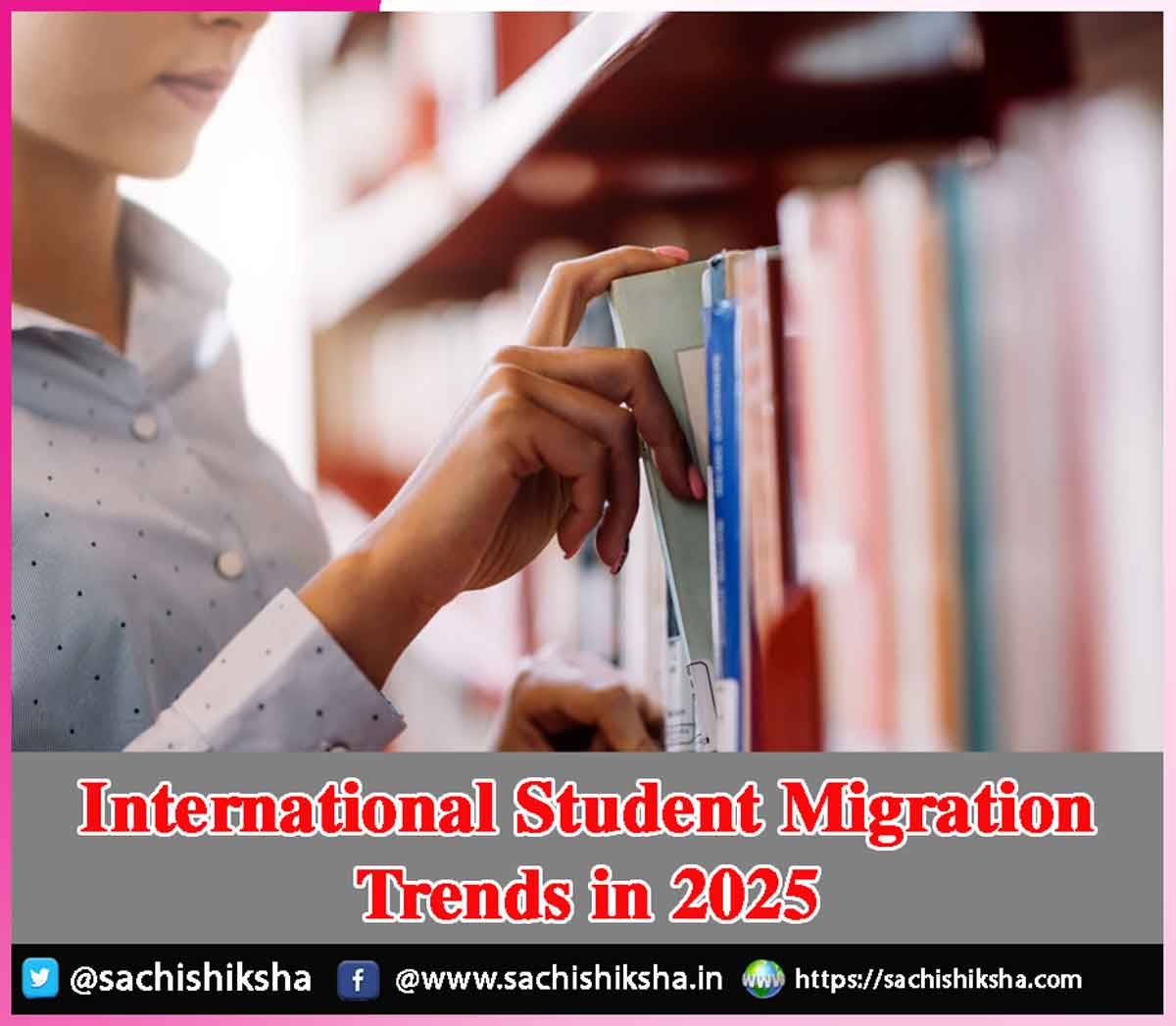International Student Migration Trends in 2025
Introduction: In 2025, international student migration continues to be a dynamic and integral component of global mobility, education, and workforce development. As the world emerges from the long-term impacts of the COVID-19 pandemic, the landscape of global education has shifted significantly.

-
Table of Contents
Major Destination Countries and Shifting Dominance
In 2025, traditional study destinations such as the United States, the United Kingdom, Canada, and Australia remain dominant, but new players are rapidly gaining ground. The competition among countries to attract global talent has intensified, with governments increasingly recognizing the economic and diplomatic value of international students.
- United States: After years of policy fluctuations, the U.S. has stabilized its visa processes and expanded work opportunities under the Optional Practical Training (OPT) and STEM-OPT extensions. This has revived interest among international students, particularly from India, China, and Latin America.
- United Kingdom: The reintroduction of the Graduate Route, which allows international graduates to work for two years (three for PhD holders), has solidified the UK’s appeal. British universities continue to benefit from their global rankings and historical prestige.
- Canada: Known for its student-friendly immigration policies, Canada remains a top choice. Its Post-Graduation Work Permit (PGWP) and clear pathways to permanent residency make it especially attractive for students from South Asia and Africa.
- Australia and New Zealand: After a slow post-COVID recovery, both countries have rebounded, with universities and governments actively re-engaging international markets. Flexible hybrid programs and regional migration incentives are drawing students back.
- Emerging Destinations: Countries like Germany, the Netherlands, South Korea, and the United Arab Emirates are gaining attention due to lower tuition fees, high-quality education, and increased programs in English. China and Russia are also increasing their scholarship offerings and promoting study-abroad options as part of broader geopolitical strategies.
-
Demographic Shifts and Source Countries
In 2025, the largest sources of international students continue to be China and India, but their growth dynamics have changed.
- China: While still a top source, China’s outbound numbers are plateauing due to a shrinking youth population and improved domestic education. However, Chinese students are diversifying their destinations, with more opting for European and Asian countries over traditional Western destinations.
- India: India’s youth demographic is fueling a surge in student migration. With over 1 million Indian students expected to be studying abroad in 2025, India has overtaken China in key markets like Canada and the UK.
- Africa: Africa, particularly Nigeria, Kenya, and Ghana, is emerging as the next major source region. Population growth, limited local higher education infrastructure, and rising middle-class aspirations are driving this trend.
- Southeast Asia and Latin America: Countries like Vietnam, Indonesia, Brazil, and Colombia are also contributing significantly to the international student population, with increasing participation in short-term mobility and exchange programs.
-
The Rise of Hybrid and Online Education Pathways
One of the most transformative trends in 2025 is the normalization of hybrid education models. Many students now begin their studies online or in their home countries before transferring abroad to complete their degrees. This flexibility has allowed universities to tap into previously underserved markets and offer more affordable options.
- Transnational Education (TNE): Branch campuses, joint degrees, and articulation agreements are expanding. For instance, UK and Australian universities have ramped up partnerships in Asia and the Middle East to offer global degrees locally.
- Micro-credentials and Stackable Degrees: Students are increasingly pursuing shorter programs that can be “stacked” into full qualifications. These credentials often have immediate employment value, aligning education with labor market needs.
- Tech Platforms and EdTech: Companies like Coursera, edX, and FutureLearn are partnering with universities to deliver accredited programs. These platforms offer pathways to international study without the need for immediate relocation.
-
Work and Migration Pathways as Decision Drivers
In 2025, students are not only motivated by the quality of education but also by post-study work opportunities and permanent residency prospects. This “study-to-stay” pathway is particularly influential in countries with labor shortages and aging populations.
- Canada and Australia are exemplary in linking education with immigration, making them highly attractive to students seeking long-term migration.
- The UK and the US have expanded work opportunities but are still navigating political sensitivities around migration.
- Germany and France are investing in retention strategies for international STEM graduates, offering easier access to job markets and visas.
Students now consider migration policy, cost of living, and employability just as much as academic rankings when choosing a destination.
-
Government Policies and National Strategies
Countries have launched or updated international education strategies to remain competitive. Key features include:
- Increased Scholarships: Governments and universities are offering more merit-based and needs-based scholarships to attract high-potential students.
- Simplified Visa Processes: Faster, more transparent visa procedures, including digital visas and biometric systems, have improved the student experience.
- Diversity Targets: To reduce over-reliance on a few source countries, many institutions are prioritizing diversification, recruiting more students from Africa, Southeast Asia, and Latin America.
- Quality Assurance and Regulation: Governments are tightening regulations to prevent exploitation and ensure quality, particularly in the private education sector.
-
The Role of Technology and AI
Artificial Intelligence (AI) is reshaping how students select institutions, apply for visas, and access academic support.
- AI-Driven Counseling: Platforms like ApplyBoard and Leverage Edu use AI to match students with programs and help navigate applications and scholarships.
- Virtual Campus Experiences: Universities now offer immersive virtual tours, peer interaction platforms, and AI-powered academic advising to support students before and after migration.
- Smart Immigration Systems: Countries are deploying AI to predict visa fraud, assess eligibility, and even automate parts of the decision-making process.
Technology is making international education more accessible, personalized, and efficient, but it also raises concerns about data privacy and equity.
-
Challenges Facing International Students in 2025
Despite the growth in numbers and opportunities, international students continue to face challenges:
- Affordability: Tuition fees and living expenses remain significant barriers, especially in high-cost countries like the US, UK, and Australia.
- Housing Shortages: Urban centers in many destination countries are struggling with student accommodation shortages, leading to high rents and overcrowding.
- Mental Health: The stress of migration, cultural adjustment, and academic pressure continues to impact student well-being. Universities are investing more in mental health support, but gaps remain.
- Discrimination and Xenophobia: Political rhetoric and isolated incidents of racism can discourage students from choosing or remaining in certain countries.
- Regulatory Uncertainty: Sudden changes in immigration or education policy, often tied to domestic politics, can disrupt student plans and cause insecurity.
Conclusion
International student migration in 2025 reflects a rapidly evolving global education ecosystem. While traditional destination countries continue to lead, emerging players and digital transformation are reshaping the landscape. Students are more strategic than ever, seeking not only quality education but also career and migration opportunities. Governments, institutions, and the private sector must collaborate to ensure a fair, sustainable, and enriching international student experience.
The future of international student mobility will depend on adaptability, inclusion, and innovation. As the world becomes more interconnected, students will continue to cross borders not only to learn but to lead– driving cultural exchange, technological progress, and global cooperation.













































